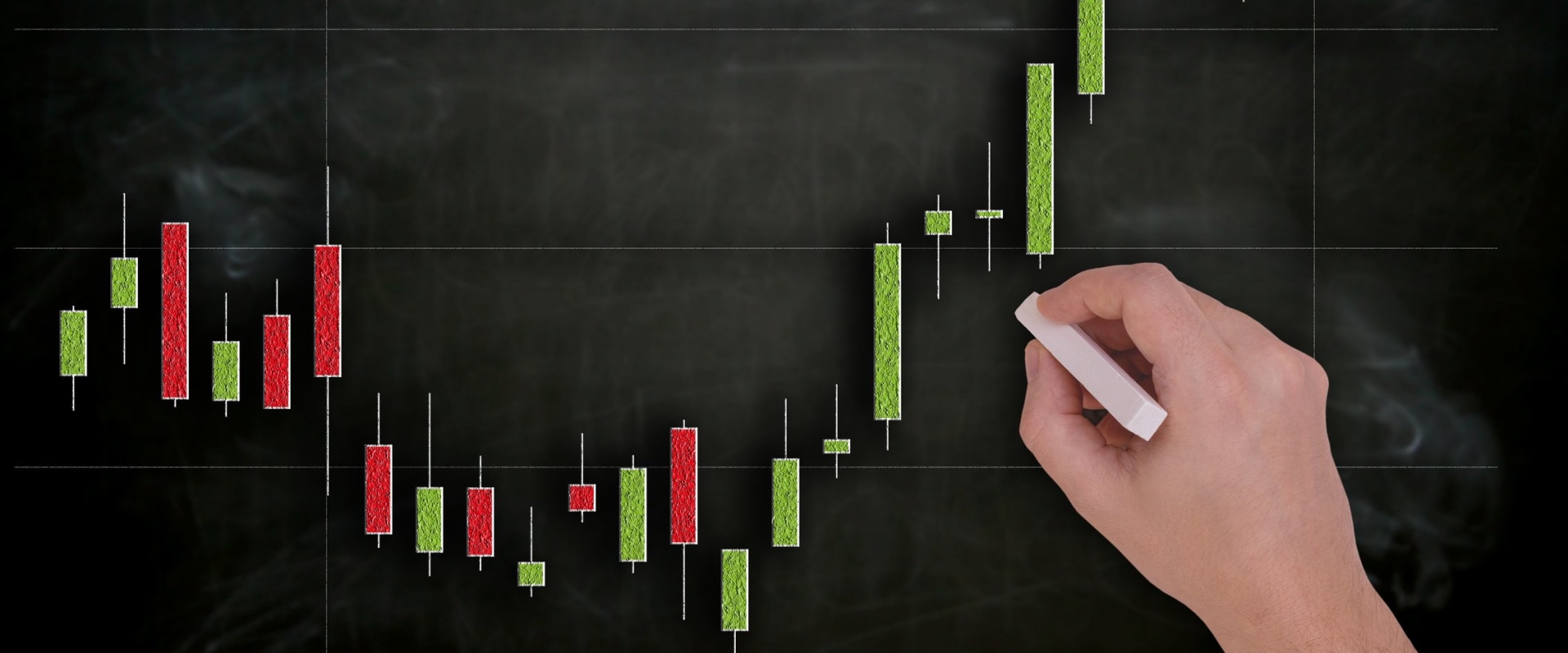Fibonacci Retracement Strategy for Forex Trading
Forex trading is a highly dynamic and competitive market where traders employ various strategies to gain an edge. One popular technique used by traders is the Fibonacci retracement strategy. Named after the famous Italian mathematician Leonardo Fibonacci, this strategy utilizes key Fibonacci ratios to identify potential support and resistance levels in price movements. In this article, we will explore the fundamentals of the Fibonacci retracement strategy and how it can be applied effectively in Forex trading.
1. Understanding Fibonacci Retracement
What is Fibonacci retracement?
Fibonacci retracement is a technical analysis tool used to determine potential levels of support and resistance in price movements. It is based on the mathematical sequence discovered by Leonardo Fibonacci in the 13th century. The sequence, known as the Fibonacci sequence, starts with 0 and 1, and each subsequent number is the sum of the two preceding numbers (0, 1, 1, 2, 3, 5, 8, 13, 21, and so on).
How does it work?
In Forex trading, the Fibonacci retracement levels are plotted on a price chart to identify potential areas where the price might reverse its direction after a significant move. The main idea behind the strategy is that after a price surge or decline, the price often retraces or "pulls back" before resuming its original trend. Traders use the Fibonacci ratios as guidelines to anticipate these retracement levels.
2. Fibonacci Levels and Ratios
Key Fibonacci ratios
The key Fibonacci ratios used in the retracement strategy are derived from the Fibonacci sequence. The most significant ratios include:
0.236 (23.6%)
0.382 (38.2%)
0.500 (50.0%)
0.618 (61.8%)
0.786 (78.6%)
These ratios represent potential retracement levels where the price might find support or resistance.
Common retracement levels
Traders often consider three common retracement levels based on the Fibonacci ratios:
38.2%: This level is considered the shallowest retracement and is often used to identify potential buying opportunities in an uptrend or selling opportunities in a downtrend.
50.0%: This level represents a moderate retracement and is frequently used as a confirmation level to support the continuation of the prevailing trend.
61.8%: This level is considered the deepest retracement and is often used as a key support or resistance level to evaluate potential trend reversals.
3. Applying Fibonacci Retracement in Forex Trading
Identifying a price trend
Before applying the Fibonacci retracement strategy, it is essential to identify a clear price trend. Traders typically look for a series of higher highs and higher lows in an uptrend or lower highs and lower lows in a downtrend. Once the trend is established, Fibonacci retracement levels can be used to identify potential entry and exit points.
Drawing Fibonacci retracement levels
To draw Fibonacci retracement levels, a trader selects a significant swing high and swing low in the price chart. The Fibonacci retracement tool is then applied, and the levels are automatically plotted on the chart. These levels indicate potential areas where the price might retrace before continuing in the direction of the prevailing trend.
4. Trading Strategies with Fibonacci Retracement
Support and resistance levels
Fibonacci retracement levels act as essential support and resistance levels in Forex trading. When the price retraces to one of these levels, traders analyze other technical indicators and price action signals to confirm potential buying or selling opportunities. For example, if the price retraces to a 61.8% Fibonacci level in an uptrend and shows signs of bullish candlestick patterns or oversold conditions, it may indicate a potential buying opportunity.
Fibonacci confluence zones
Traders often look for confluence zones where multiple Fibonacci retracement levels align with other technical indicators or chart patterns. These confluence zones increase the probability of a successful trade setup. For instance, if a 50.0% Fibonacci retracement level coincides with a trendline support and an oversold signal from a momentum indicator, it strengthens the potential buying opportunity.
5. Risk Management and Fibonacci Retracement
Setting stop-loss levels
Proper risk management is crucial in Forex trading. When using the Fibonacci retracement strategy, traders typically set their stop-loss levels below the key Fibonacci retracement levels. By doing so, they aim to limit their potential losses if the price reverses against their anticipated direction.
Determining profit targets
Traders can also use Fibonacci retracement levels to determine profit targets. They may choose to exit a trade partially or entirely when the price reaches a specific Fibonacci level. For example, a trader who anticipates a bullish move might set their profit target at the 161.8% Fibonacci extension level.
6. Advantages and Limitations of Fibonacci Retracement
Benefits of the strategy
The Fibonacci retracement strategy offers several benefits to Forex traders. It provides a systematic approach to identify potential support and resistance levels, allowing traders to make informed decisions. Additionally, the strategy can be applied to various timeframes and works well in conjunction with other technical analysis tools.
Potential drawbacks to consider
While Fibonacci retracement is a widely used strategy, it is not foolproof. One limitation is that different traders may choose slightly different swing highs and lows when drawing the Fibonacci retracement levels, potentially leading to variations in analysis and results. Moreover, the strategy does not account for fundamental factors that can significantly influence price movements.
Example 1: Bullish trend
In a bullish trend, a trader identifies a swing low and swing high. Applying the Fibonacci retracement tool, the trader observes that the price retraces to the 50.0% Fibonacci level, coinciding with a trendline support. Additionally, there is a bullish engulfing candlestick pattern and a bullish divergence on the stochastic oscillator. These signals indicate a potential buying opportunity, and the trader enters a long position.
Example 2: Bearish trend
In a bearish trend, a trader identifies a swing high and swing low. Drawing the Fibonacci retracement levels, the trader notices that the price retraces to the 61.8% Fibonacci level, aligning with a horizontal resistance level and a bearish engulfing candlestick pattern. These confluence factors suggest a potential selling opportunity, and the trader enters a short position.
The Fibonacci retracement strategy has become a popular trading tool among forex traders. It is based on the mathematical sequence of Fibonacci numbers, which are used to determine potential areas of support and resistance. This strategy takes advantage of the fact that certain price levels tend to be respected by the market, allowing traders to enter or exit trades with better accuracy. Using Fibonacci retracement levels can help traders identify areas where they can enter a trade, place stops and take profits. This technique is also useful in determining key market turning points, which can be used for counter trend trading strategies.
In this article, we will explore how to use the Fibonacci retracement strategy for Forex trading. Fibonacci retracement is based on the Fibonacci sequence, which is a series of numbers that follows a certain pattern. The sequence starts with 0 and 1, and then each number in the sequence is the sum of the two previous numbers. For example, the third number in the sequence is 1 (0 + 1), the fourth number is 2 (1 + 1), the fifth number is 3 (2 + 1), and so on. Traders use this sequence to identify potential support and resistance levels in the market. Traders look for levels where price action may pause or reverse when using Fibonacci retracement.
They look for levels that are either 61.8%, 50%, or 38.2% of the prior move in price. For example, if a currency pair is trending higher, traders will look for levels that are 61.8%, 50%, and 38.2% of the prior move in price to identify potential areas of support. If the currency pair reverses at one of these levels, it could be an indication that a trend reversal may occur. Traders can also use Fibonacci retracement to identify potential exit points for their trades. For example, if a trader buys a currency pair at a certain level and it moves higher, they can use Fibonacci retracement to identify potential levels where they can take profits or exit their trade.
It's important to remember that Fibonacci retracement is not an exact science, and there is no guarantee that price action will reverse at one of these levels. However, it can be a useful tool for traders to use when looking for potential entry and exit points in the market.
Benefits of Using Fibonacci Retracement
Fibonacci retracement is a powerful tool that can be used by forex traders to identify potential areas of support and resistance in the market. By using Fibonacci retracement levels, traders can accurately identify entry and exit points for trades, as well as areas where trend reversals may occur. Using Fibonacci retracement can provide a number of benefits to traders. One of the most significant benefits is that it can help traders identify potential areas where price action may pause or reverse.This can provide traders with the information they need to make more informed trading decisions. In addition, Fibonacci retracement can also help traders identify potential entry and exit points in the market. By pinpointing areas where price action may pause or reverse, traders can look to enter or exit positions at advantageous times. This can help maximize profits and minimize losses. Finally, Fibonacci retracement can be used to identify areas of support and resistance in the market. By understanding these levels, traders can better understand the overall trend of the market and make more informed decisions when trading.
How to Use Fibonacci Retracement
Fibonacci retracement is a powerful tool used by forex traders to identify potential areas of support and resistance in the market.When using Fibonacci retracement, traders look for levels that are 61.8%, 50%, and 38.2% of the prior move in price. These are the most commonly used levels, but some traders may also look for other levels such as 23.6%. Once these levels are identified, traders can then look for signs of potential trend reversals or areas where price action may pause or reverse. To use Fibonacci retracement levels, traders must first identify a significant low and high point on a chart. These points will be used to calculate the retracement levels.
Traders can then look for potential areas where the price could reverse or stall. If the price finds support at one of the Fibonacci levels, it could be an indication that the trend is starting to reverse and could be a good entry point for a trade. On the other hand, if the price finds resistance at one of the Fibonacci levels, it could be an indication that the trend is about to resume and could be a good exit point for a trade. The Fibonacci retracement tool can be a powerful tool in forex trading when used correctly. By identifying potential areas of support and resistance, traders can better identify entry and exit points for their trades.
It is important to remember that Fibonacci retracements should be used in conjunction with other forms of analysis such as technical indicators and chart patterns. In conclusion, Fibonacci retracement is a powerful tool that can be used by forex traders to identify potential areas of support and resistance in the market. It can help traders identify entry and exit points for their trades, as well as potential areas where trend reversals may occur. Although there is no guarantee that price action will reverse at one of these levels, it can be a useful tool when looking for potential opportunities in the market. It is important to remember that Fibonacci retracement is only one of many strategies available to traders, and should be used in conjunction with other methods to ensure successful trading.
The Fibonacci retracement strategy is a powerful tool for Forex traders to identify potential support and resistance levels. By using the key Fibonacci ratios and retracement levels, traders can enhance their decision-making process and improve the accuracy of their trade setups. However, it is important to remember that no strategy guarantees success, and traders should always combine Fibonacci retracement analysis with other technical and fundamental factors.
What other tools can be used in conjunction with Fibonacci retracement?
Traders often combine Fibonacci retracement with other technical analysis tools such as trendlines, moving averages, and oscillators like the Relative Strength Index (RSI) or Moving Average Convergence Divergence (MACD).
Is the Fibonacci retracement strategy applicable to all timeframes?
Yes, Fibonacci retracement can be used on various timeframes, including intraday, daily, weekly, or even monthly charts.
Can Fibonacci retracement be used in other financial markets besides Forex?
Absolutely! Fibonacci retracement is applicable to any financial market that exhibits trending behavior, including stocks, commodities, and cryptocurrencies.
Are there automated tools available for Fibonacci retracement analysis?
Yes, many trading platforms provide built-in tools for drawing Fibonacci retracement levels automatically. Traders can also find dedicated Fibonacci retracement indicators and software.
How much historical data should be considered when drawing Fibonacci retracement levels?
The amount of historical data to consider depends on the timeframe being analyzed. For shorter timeframes, focusing on recent price swings may be sufficient, while longer timeframes may require a broader historical perspective to identify significant swing highs and lows.












Leave Reply